Smart Packaging with Robotics: Optimizing Performance in Co-Packing Facilities
The emergence of smart packaging solutions resulted from growing demands for efficiency and precision in the packaging industry. Initially, the focus was on developing packaging solutions that were protective and intelligent in their interaction with consumers and supply chains. However, with technological advancements, this concept evolved, leading to a significant shift in operational demands. Now there was an increasing need for speed, accuracy, and efficiency in packaging processes.
With companies ready to invest in tech-integrated packaging solutions, the global smart packaging industry is expected to reach $59 billion by 2025. This growth underscores the industry's commitment to innovation and meeting market challenges.
Additionally, in co-packing facilities, different products require efficient handling. Therefore, to address these challenges, co-packing companies began incorporating AI-powered robots and they soon became crucial for the industry. These AI robots brought a new dimension to packaging - they could perform tasks with remarkable precision, speed [up to 500-1000 picks per hour] and adapt to various packaging needs.
This integration of AI in robotics signifies a major advancement in smart packaging solutions, blending cutting-edge technology with practical applications to meet the industry’s evolving demands.
Intelligent Automation for Quality Assurance
The co-packing industry’s growth is largely influenced by two critical megatrends: sustainability and digitalization. And at the heart of these trends is robotics automation. This shift towards robotics is to increase operational efficiency of the industry while aligning with the global push for sustainable packaging solutions and digital transformation of the industry.
- Precision and Consistency: Robots can maintain high levels of precision in repetitive tasks. This consistency is crucial in packaging to ensure each and every product is handled and packed properly. It also reduces the chances of human errors by up to 50%.
- Advanced Inspection Capabilities: Robots equipped with sensors and vision systems can identify defects and inconsistencies that human eyes might miss. This capability allows for a more thorough and accurate inspection process.
- Data-Driven Adjustments: AI robots can analyze data from the packaging process in real-time. This analysis enables them to make immediate adjustments for optimizing quality control, like altering the force used for packaging fragile items.
- Minimized Contamination Risks:
Automation reduces the need for human contact with products. This is especially crucial in sectors like food and pharmaceuticals, where contamination control is paramount.
Innovative Applications of Smart Packaging
Innovative applications of smart packaging are reshaping how we approach packaging challenges. However, integrating these advanced technologies into existing systems comes with its own set of hurdles. Let's explore the innovative applications of smart packaging:
- Customization at Scale: Robotics allow for high levels of customization in packaging without sacrificing speed or efficiency. This capability is essential in today’s competitive market, where demand for personalized products is rising.
- Sustainability Initiatives: Advanced robotics optimize material usage and reduce waste, contributing to sustainable packaging practices. Robots can also facilitate the use of eco-friendly materials that might be more challenging to handle manually.
- Enhanced Consumer Engagement: Smart packaging solutions can include interactive elements like QR codes or augmented reality features. This helps create a more engaging experience for the consumer.
Common Hurdles in Integrating Robotics
By addressing these challenges, the potential of robotics in smart packaging solutions can be fully realized, leading to a more efficient, sustainable, and consumer-friendly packaging industry:
- Initial Investment Costs: The upfront costs of robotic systems can be challenging, which might be a barrier for smaller co-packing facilities. Though there may be creative ways to initiate these conversations.
- Training and Skill Requirements: Implementing robotics can, but not always, require a workforce skilled in managing and maintaining these systems, necessitating training or hiring specialized personnel.
- Integration with Existing Systems: Merging new robotic technologies with existing packaging lines may be a delicate process. It could require careful planning and sometimes significant modifications to current processes.
- Safety and Compliance: Ensuring safety in an environment where humans and robots coexist is crucial, as is compliance with industry regulations and standards.
Security and Reliability in Co-Packing Automation
In the context of co-packing automation, ensuring the robustness of smart packaging solutions is critical. This involves enhancing security and reliability, key factors in maintaining the integrity and efficiency of the packaging process. Here's how companies can achieve robustness:
- Cybersecurity Protocols: Implementing strong cybersecurity measures is essential to protect interconnected systems from data breaches and cyber-attacks.
- Access Control and Tamper Prevention: Advanced access controls prevent unauthorized access, safeguarding against tampering or misuse of packaging machinery.
- Real-Time Monitoring: Utilizing tools for real-time monitoring allows for immediate detection and diagnosis of issues, minimizing downtime.
- Routine Maintenance: Regular maintenance and inspection are vital for early detection of potential issues, helping prevent breakdowns, and ensuring consistent performance.
- Quality Components: Investing in high-quality, durable components enhances longevity and reliability of robotic systems, reducing the need for frequent repairs.
Looking ahead, the future of co-packing automation through smart packaging solutions and robotics promises even greater advancements. We are on the brink of a new era where intelligent automation, integration of AI, advanced robotics, and sustainable practices could redefine packaging standards. The potential for more personalized, efficient, and environmentally friendly packaging solutions is vast. This progression marks not just an evolution in packaging but a significant leap forward in operational excellence and customer satisfaction.
https://blueprintautomation.com/en/event/6-things-robotics-is-changing-in-the-packaging-industry
https://automation.omron.com/en/us/blog/top-six-trends-shaping-packaging-industry-today
